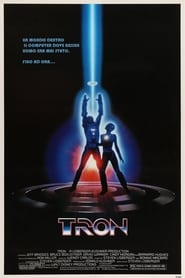The costumes in Tron achieved their iconic glow through a traditional animation trick known as "backlight animation." By shining colored light through transparent mattes of specific screen elements, the filmmakers could give the costumes their glowing effect. First, the animated shot is photographed normally, but the "glow areas" are (usually) painted black. Then, the camera is rewound to the beginning of the shot and a counter-matte is placed down. Now, the originally blacked-out glow placeholders are transparent. Next, a light source is shone through the transparency, and colored gels can be applied in addition to any exposure shifts or filters (for sharpness, fuzziness, etc.). The result is a very tactile and magical lighting effect, complete with tapering fringes and unique liveliness that cannot really be simulated by hand (or digitally, for that matter). Because it's tricky to add texture to a glow, backlight animation is principally reserved for simulating lightning strikes, flames, or (as with Tron) energy. Given that the computer world of Tron is chiefly composed of light, just about every permutation of the process appears in the film, flanked by airbrushed backgrounds and the occasional CGI. What makes the use of backlit animation so notable in Tron, apart from the sheer scale of its use, is how it was used to apply animated elements to live-action performances.
Scritto da il
05-03-2025 alle ore 08:45
Immagini
Nessun dato in archivio
Consiglia
Voto
Nessun dato in archivio
Commenti
Nessun dato in archivio
Film
Nessun dato in archivio
